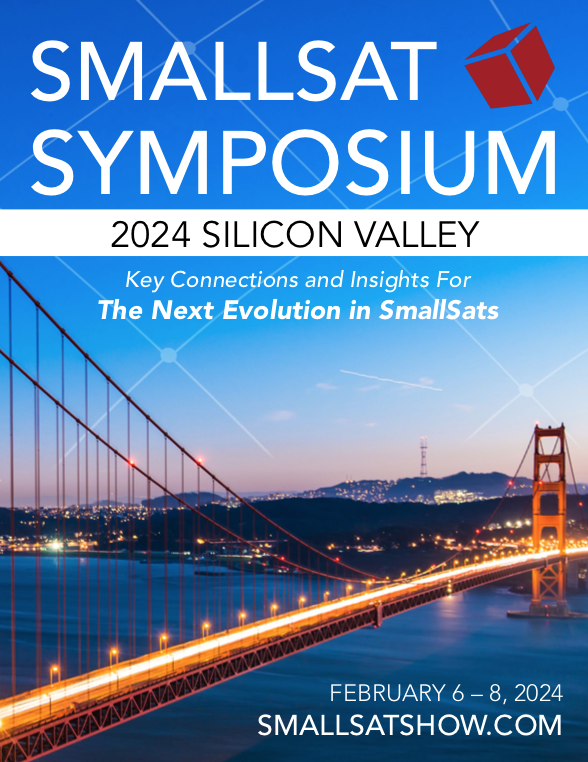Since their discovery in the 18th century, asteroids have completely captivated human interest — these mysterious minor planets span the gamut of intrigue, stirring up everything from fear to fascination.
They cause concern about troubling, Earth-endangering trajectories and awaken wonder about compositions that may hold the key to understanding the origins of life. Though much about our celestial companions still remains shrouded in secrecy, recent asteroid sample return missions have been crucial to developing our understanding, increasing our planetary security, and advancing our position on the cosmic chessboard.
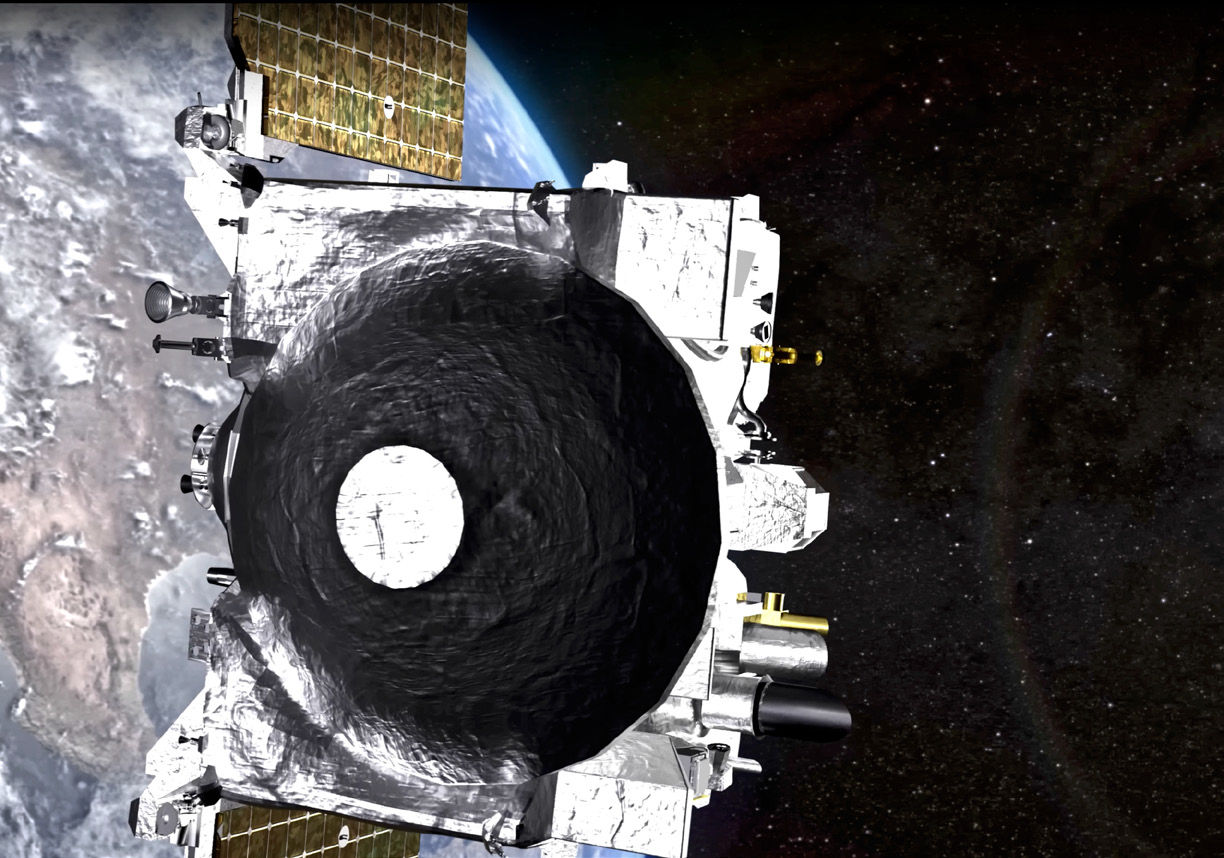
Artistic rendition of OSIRIS-REx on mission, courrtesy of NASA.
A Special Delivery — Seven Years In The Making
In September of 2016, NASA launched the first asteroid sample return mission in U.S. history. This intrepid explorer was dubbed the OSIRIS-REx (Origins, Spectral Interpretation, Resource Identification, Security, Regolith Explorer) and given the primary objective of collecting a sample from the asteroid Bennu.
The spacecraft was also tasked with several secondary objectives, including: the use of mapping technology to gain a better understanding of Bennu’s surface, providing a more precise reading of Bennu’s trajectory, and using Bennu as a subject to study the Yarkovsky effect — a phenomenon where the diurnally varying levels of solar radiation in an asteroid affect its orbit.
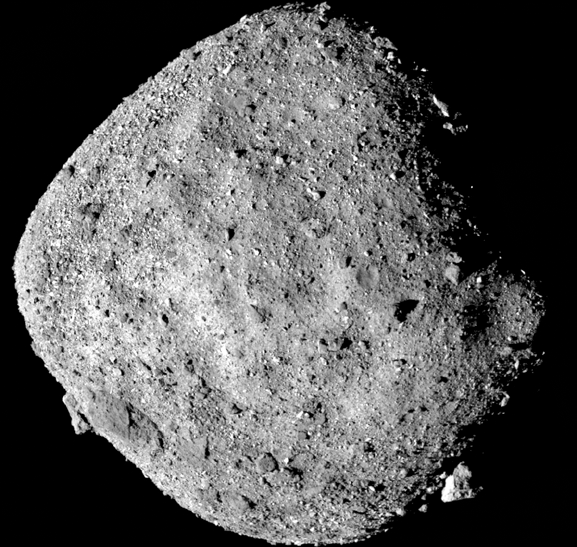
This mosaic image of asteroid Bennu is composed of 12
PolyCam images collected on December 2, 2018 by the
OSIRIS-REx spacecraft from a range of 15 miles (24 km).
Image is couresy of NASA/Goddard/University of Arizona
In a moment of incredible national and global victory, the OSIRIS-REx completed its primary objective in September of 2023, delivering the largest sample ever collected from beyond the Moon. This sample promises to yield untold benefits to the U.S. scientific community and the world at large, fostering global communication and collaboration, providing fascinating fodder for researchers worldwide, and furthering an understanding of our place in the cosmos.
What’s Soft As A Rock + Taller Than The Empire State Building?
At a colossal 1,610 feet, the asteroid Bennu outreaches the Empire State Building in its immensity. The asteroid was selected as a destination due to curiosity about its composition and concern about its trajectory, with many eager to better understand the asteroid’s movements in relation to Earth.
OSIRIS-REx orbited Bennu for more than a year, gathering information about its surface and movements that has cemented predictions about its trajectory all the way up to the year 2135.
Careful observation during orbit led to some fascinating findings about Bennu’s surface. Home to more than 200 boulders as wide as 30 feet, its rock is only 1/6 the density of rocks on Earth. The research team reported that its structure was more fluid in nature than the rigid rocks of Earth. After collecting an abundant 8 ounces of regolith from a northern crater named Nightingale, OSIRIS-REx began its multimillion mile trip home.
Stellar Co-Stars + Interstellar Collaboration
The OSIRIS-REx sample return mission has been a resounding success; however, it’s well worth acknowledging that it is not the first of its kind and owes much of its achievement to its global predecessors.
The Japan Aerospace Exploration Agency (JAXA) has led two successful sample return missions. Its first, the Hayabusa mission, visited the asteroid Itokawa and returned a sample to Earth in 2010; it proved to be the shoulders NASA stood upon when designing the OSIRIS-REx mission. JAXA’s second mission, the Hayabusa2, visited the asteroid Ryugu and delivered a sample back to Earth in 2020.
Due to Hayabusa2’s concurrence with the OSIRIS-REx mission, NASA and JAXA formed a pivotal collaboration that enriched both missions and strengthened relationships in the global space community.
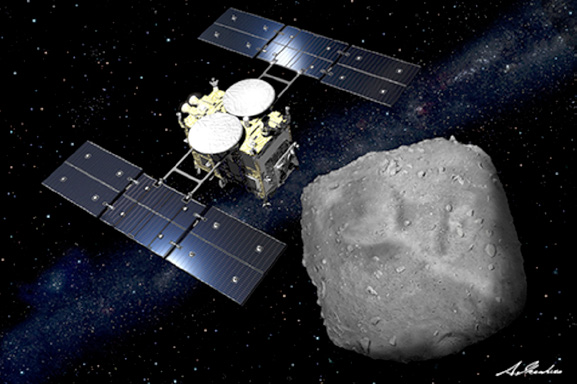
JAXA’s asteroid explorer “Hayabusa2”. Image is courtesy
of Akihiro Ikeshita
Missions to Improve Transmissions, Mapping NEAs + Throwing a DART
While September marked a successful sample return from OSIRIS-REx, October witnessed the launch of NASA’s Psyche mission. The spacecraft Psyche will investigate a metallic asteroid of the same name, likely reaching orbit in 2029.
Psyche will also test the Deep Space Optical Communications system, which promises to improve upon current radio wave-based communications with Earth and drastically reduce the time it takes to transfer data between space and Earth.
Meanwhile, the initiative to map the positions of near-Earth asteroids (NEAs) is stronger than ever before. Despite the unfortunate loss of 2022’s NEA Scout shortly after its launch aboard the Artemis I mission, NASA’s commitment toblocating NEAs remains unwavering. NASA is planning the launch of another asteroid scout, the Near-Earth Object Surveyor, for 2027.
NASA is also experimenting with methods for collision prevention, with 2022’s Double Asteroid Redirection Test (DART) yielding favorable results in its engineered collision with asteroid Dimorphos.
Rebirth: The OSIRIS Saga Continues With Apophis
Encouraged by the success of OSIRIS-REx, NASA decided in April of 2022 to extend its journey through the cosmos with a slightly modified name and an entirely new objective.
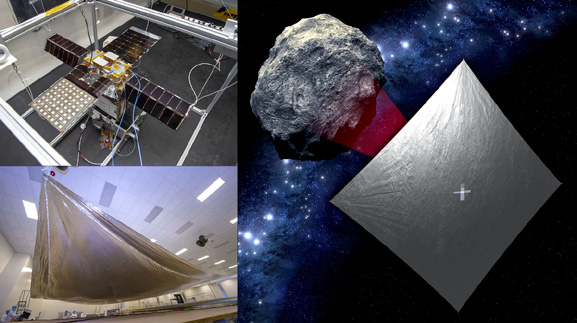
NEA Scout is composed of a small, shoebox-sized CubeSat (top left)
and a thin, aluminum-coated solar sail about the size of a racquetball
court (bottom left). After the spacecraft launches aboard Artemis I, the
sail will use sunlight to propel the CubeSat to a small asteroid.
Photos are courtesy of NASA
The freshly christened OSIRIS-APEX (APophis EXplorer) is slated to visit and examine Apophis, an asteroid notorious for its high rating on the Torino Impact Hazard Scale. Although initial readings predicted a potential collision with Earth in 2029, Apophis has since been cleared of an impact risk.
The OSIRIS-APEX is tasked with mapping the surface of Apophis and, more precisely, determining its trajectory. The same instruments and techniques that made the spacecraft so successful with Bennu promise to yield equally favorable results with Apophis, leading to an increase in our understanding of its topography and composition.
Although the Apophis addition to the original mission of the OSIRIS-REx is projected to increase the total mission cost by nearly $200 million, the heightened expense still falls well below half of the original mission budget.
Furthermore, this mission’s involvement of more than 230 scientists who represent 38 institutions across the globe clearly demonstrates its importance in uniting the world within a sense of wonder, ingenuity and forward motion.
For more insights on OSIRIS-REx and other space trends, please visit www.thespacereport.org.
www.spacefoundation.org/
Thomas Dorame leads Symposium 365, the premier source for media and events in the global space ecosystem, offering authoritative news and information and venues for networking and conducting business — including the world-renowned Space Symposium, The Space Report and Symposium 365 Digital Platform. Based in Washington, D.C., Thomas brings a combination of military and civilian education to Space Foundation, complemented by both operational experience and working strategic issues. He engages with government, commercial and education sectors to produce signature programming — live and online — for professionals, entrepreneurs, educators and students to learn, connect and conduct business 365 days a year.
Thomas is a graduate of the U.S. Military Academy at West Point with 30 years of active military service and experience managing diverse, multidiscipline organizations. Thomas holds a Bachelor of Science in economics from the U.S. Military Academy and a master’s degree in national security studies from Georgetown University, with studies at Oxford University. He also earned a master’s degree in strategic studies from the United States Army War College.


